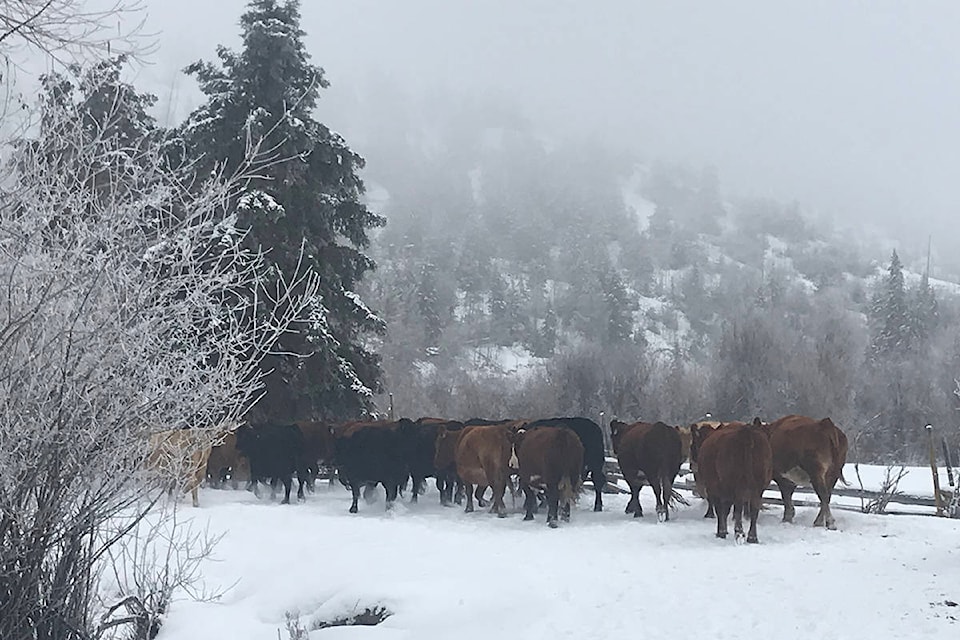One topic covered in the Canadian Cattlemen magazine is winter water. In the October 22 edition of this magazine, there were stories about what some producers are doing in trying to make improvements in their management.
Of course, water can be in the form of snow, if there is enough for the cattle to get their fill.
There are anecdotes of cattle eating hoarfrost on grass because there is no other evidence of available open water. I haven’t had experience with that situation, but others have. I know it doesn’t take much of a trickle to keep cows from walking a mile to a potable source.
Where we are located, we usually have springs starting up after rainfall, so water is not a worry. Even if the ground freezes, springs can seep through the frost and cows can get their fill.
We have to be vigilant so that cows don’t go wandering on ice on lakes, ponds and streams looking for water and risk falling in.
All this aside, hard freezing in a cold snap can leave us wondering how we can get water economically to the herd, however big or small.
Ranchers and livestock owners would rather not worry, and many can be creative about the systems they put in.
Gravity water is nice if you have it, but if you have to pump it and you have not got electricity in a pasture, then things get technical, so to speak.
Last month’s Cattlemen magazine cited a few of the systems people have designed.
The most intriguing is the “nose pump.” This requires a source of water in a well or reservoir buried deep enough not to freeze (in a dug out, or with a flow that is regulated with a drain or a float valve. The water gets heated to the ground temperature).
Deeper is better, and the designers of the nose pump system like to have a 12-foot deep well, three or four feet in diameter.
It doesn’t take cows long when they poke around the pump, which is mounted in a bowl, before they learn that pushing on it yields a flow of water.
Excess water in the bowl when they have finished drinking goes into an overflow and into an underground drain to avoid a buildup of ice. It is a good idea to drain fouled water elsewhere, back into the clean well source to void contamination.
One thing that is essential if using one of the ground-heated insulated drinking fountains is that the intake water must have a certain amount of heat to keep everything from freezing.
Some manufacturers say the water has to be coming out of the ground at about 42 degrees Fahrenheit to keep from freezing. Surface water from a stream can be close to freezing and won’t keep the system thawed.
Even this cold water running through the ground for a kilometre buried four feet won’t warm up. This I can attest to. Perhaps deep burial at 10 feet might warm the supply, but that is lot of digging!
My advice to livestock owners is to keep abreast of developments and get advice from suppliers and government sources.
David Zirnhelt is a rancher in the Cariboo and member of the Cariboo Cattlemen’s Association. He is also chair of the Advisory Committee for the Applied Sustainable Ranching Program at Thompson Rivers University Williams Lake Campus.
READ MORE: How to bring young blood to ranching
